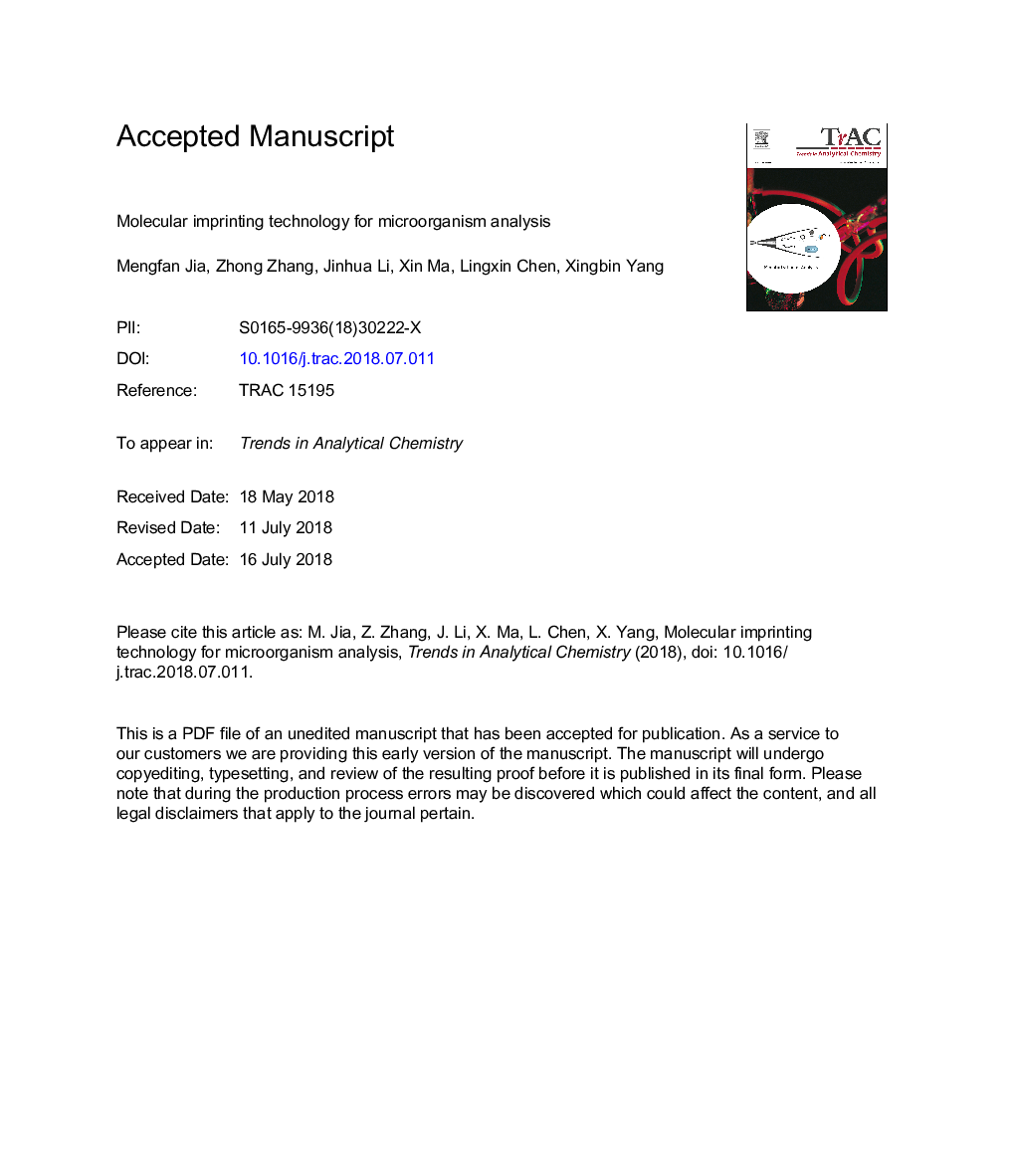| Article ID | Journal | Published Year | Pages | File Type |
|---|---|---|---|---|
| 7687441 | TrAC Trends in Analytical Chemistry | 2018 | 39 Pages |
Abstract
Molecular imprinting technology has been widely applied to various fields, owing to unique features of structure predictability, recognition specificity and application universality. Microorganism imprinting has attracted significant interests attributing to the high selectivity, simplicity rapidity, and excellent stability as well as low cost and eco-friendliness. Herein, we purpose to review the recent advances of MIT for microorganism analysis, concerning imprinting methods, analytical detection methods and typical applications. Various imprinting methods including direct and indirect imprinting for microorganism-MIPs preparation are comprehensively summarized. MIPs based biosensors containing fluorescence, electrochemical, piezoelectric and surface plasmon resonance for analytical detection of microorganisms is highlighted. Representative applications of microbiological imprinting are discussed, involving detection and quantification of bacteria, identification of bacterial species, and determination of yeast growth status. Finally, we propose the remaining challenges and future perspectives to accelerate the development and utilization of MIT in microorganism analysis and thereby push forwards microorganism identification and determination.
Keywords
AFMPDAB. subtilisMIPSSWCNTsECLVLPPBASIPBacillus subtilisCFUAnalytical detectionSurface imprinted polymerSPESSphaerotilus natansOrganosiloxanePhenylboronic acidEscherichia coliScreen-printed electrodesElectrochemiluminescenceFluorescence resonance energy transferFRETOsxmitE. coliBiosensorEnzyme-linked immunosorbent assayELISASurface plasmon resonanceSPRMolecular imprinting technologyJEVLOD یا Limit of detectionDeinococcus radioduransVirus-like particleSialic acidIdentificationMolecular imprintinglimit of detectionSEMMIMMolecularly imprinted polymersquartz crystal microbalanceMicroorganismQCMScanning electron microscopyatomic force microscopyNanoparticleSilica nanoparticlesSingle Walled Carbon NanotubesNitrogen-doped graphene quantum dotsNoroviruscolony-forming unitspolymerase chain reactionPCRCyclic voltammetryJapanese encephalitis virusProtein APolydopamineSNP
Related Topics
Physical Sciences and Engineering
Chemistry
Analytical Chemistry
Authors
Mengfan Jia, Zhong Zhang, Jinhua Li, Xin Ma, Lingxin Chen, Xingbin Yang,
